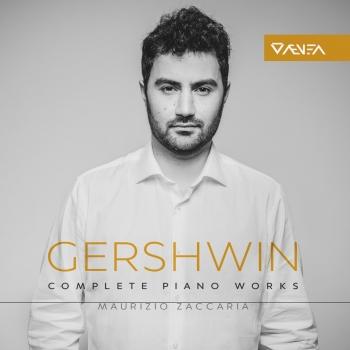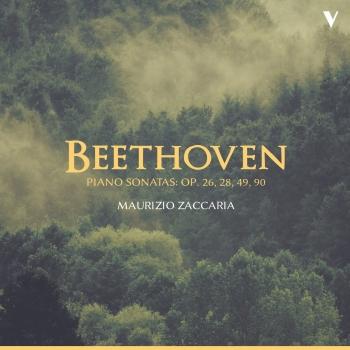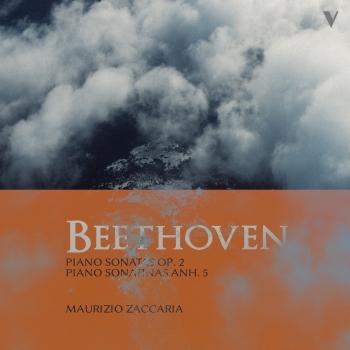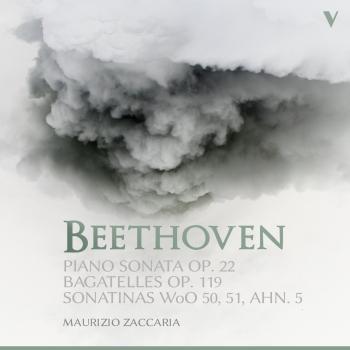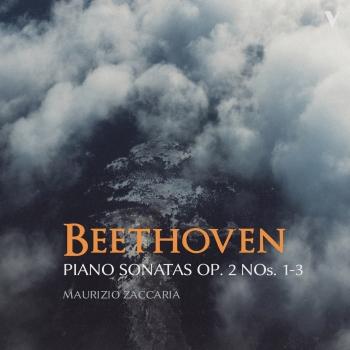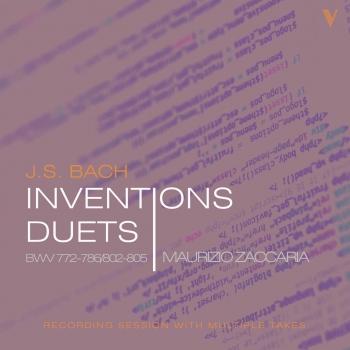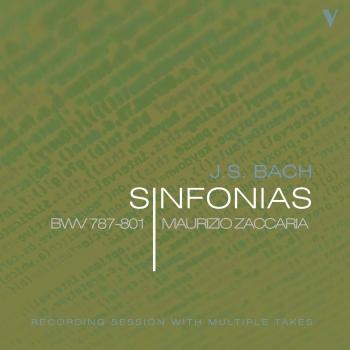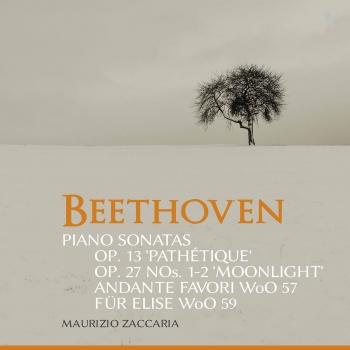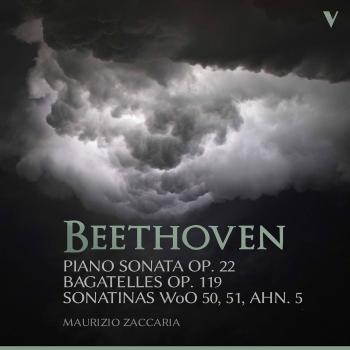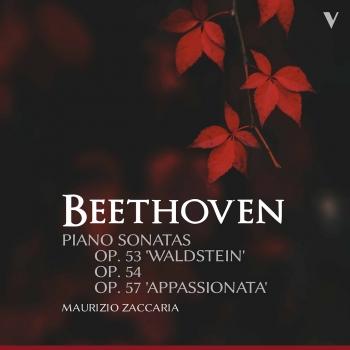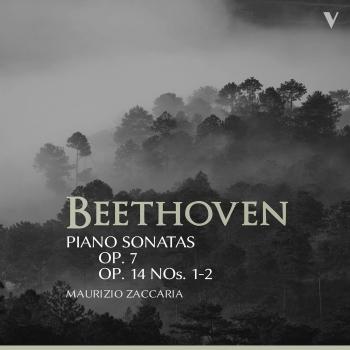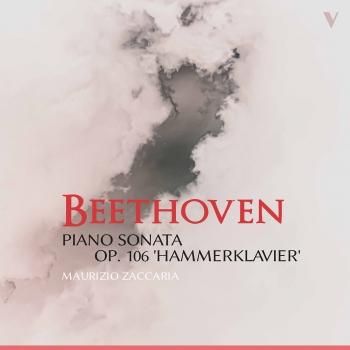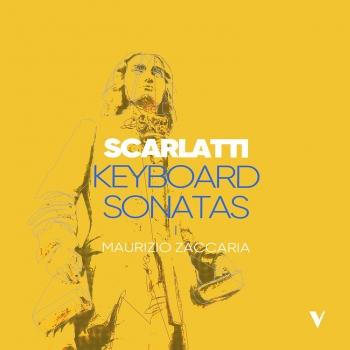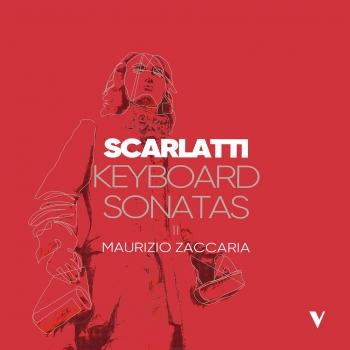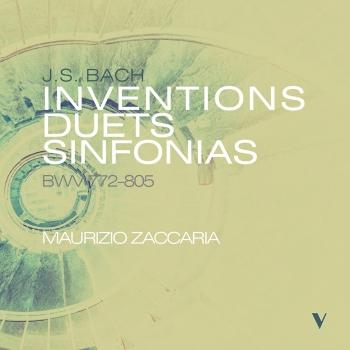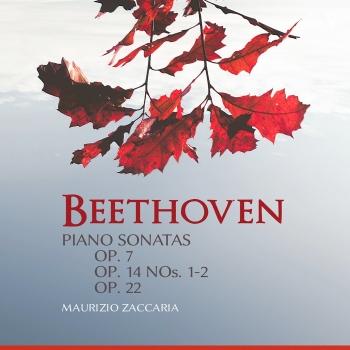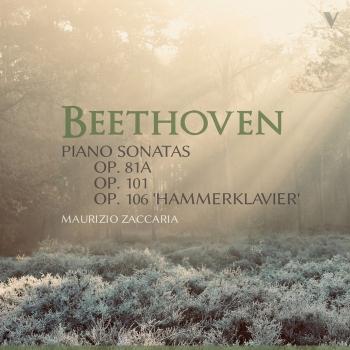
Beethoven: Piano Sonatas, Op. 31 Maurizio Zaccaria
Album info
Album-Release:
2021
HRA-Release:
22.01.2021
Label: OnClassical
Genre: Classical
Subgenre: Instrumental
Artist: Maurizio Zaccaria
Composer: Ludwig van Beethoven (1770–1827)
Album including Album cover
- Ludwig van Beethoven (1770 - 1827): Piano Sonata No. 16 in G Major, Op. 31 No. 1:
- 1 Beethoven: Piano Sonata No. 16 in G Major, Op. 31 No. 1: I. Allegro vivace 04:43
- 2 Beethoven: Piano Sonata No. 16 in G Major, Op. 31 No. 1: II. Adagio grazioso 06:58
- 3 Beethoven: Piano Sonata No. 16 in G Major, Op. 31 No. 1: III. Rondo. Allegretto 06:57
- Piano Sonata No. 17 in D Minor, Op. 31 No. 2 "Tempest":
- 4 Beethoven: Piano Sonata No. 17 in D Minor, Op. 31 No. 2 "Tempest": I. Largo - Allegro 08:00
- 5 Beethoven: Piano Sonata No. 17 in D Minor, Op. 31 No. 2 "Tempest": II. Adagio 08:41
- 6 Beethoven: Piano Sonata No. 17 in D Minor, Op. 31 No. 2 "Tempest": III. Allegretto 06:41
- Piano Sonata No. 18 in E-Flat Major, Op. 31 No. 3:
- 7 Beethoven: Piano Sonata No. 18 in E-Flat Major, Op. 31 No. 3: I. Allegro 05:44
- 8 Beethoven: Piano Sonata No. 18 in E-Flat Major, Op. 31 No. 3: Scherzo. Allegretto vivace 04:55
- 9 Beethoven: Piano Sonata No. 18 in E-Flat Major, Op. 31 No. 3: Minuet. Moderato e grazioso - Trio 03:56
- 10 Beethoven: Piano Sonata No. 18 in E-Flat Major, Op. 31 No. 3: IV. Presto con fuoco 04:11
Info for Beethoven: Piano Sonatas, Op. 31
As the nineteenth century began, Beethoven produced vast amounts of music, much of it involving the piano. A string of piano sonatas, all highly original compositions, were published between 1801 and 1803. The Three Sonatas, Op. 31, the culmination of this artistic outpouring, were part of an effort to bring new life to a form considered somewhat tired and old-fashioned. The first of the three Sonatas, in G Major, was the last to be completed. The opening movement, Allegro vivace, features an array of technical challenges (parallel scales and arpeggi) displayed in full force in the first theme and its different incarnations throughout the movement. However, the tendency is that of desynchronizing the hands in stuttering gestures, perhaps wittingly depicting a piano lesson in which the student’s inability to play evenly is met with irate retorts from the teacher. The second theme, dancelike, is in the key of B major/B minor – an unusual choice, which mirrors the tonal scheme found in first movements of earlier sonatas. The Adagio grazioso that follows is a delightful serenade, clearly modeled after operatic archetypes, with richly ornate cadenzas and arabesques. The closing movement, Allegretto, is a rondo defined by lyrical elegance. The material is characterized by frequent dialogues between the soprano and tenor registers, mode shifts, and cross rhythms. After a series of interruptions ...
Maurizio Zaccaria, piano
Maurizio Zaccaria
After a diploma in piano at "Niccola Piccinni" Conservatory of Music in Bari under the guidance of Gregorio Goffredo and a master at "Nino Rota" Conservatory of Music in Monopoli under the guidance of Benedetto Lupo, he attended the masterclasses of Marisa Somma, Cristian Zaccarias, Joaquin Achucarro, Francois J. Thiollier, Konstantin Bogino et Aldo Ciccolini.
He went on to win several national and international piano competitions: Rachmaninoff International Piano Competition, Liszt International Piano Competition (the famous Argentine pianist Martha Argerich was in the jury), Thalberg International Piano Competition, International Music Competition in Ibla, "San Nicolaus" International Piano Competition International, Piano Festival in Osnabruch (Germania), Cliburn Piano Competition in Texas (USA). In 2008 he was awarded the "Umanitaria" Society price in Milan (president Maestro Abbado); during the same year he was also awarded the Arts Price of the Italian Cultural Ministry, after which he played at the Parco della Musica in Rome. He plays in Italy and abroad in some important halls: Auditorium della Radio Televisione Svizzera (Lugano); Salle Cortot (Paris); Institut Italien de Culture (Paris); Sala Gaber (Milan); Parco della Musica (Rome); Sala Scarlatti (Naples); Teatro delle Muse (Ancona); Teatro Piccinni et Kursaal Santa Lucia (Bari); Teatro Bibiena (Mantova); Villa Ruffolo (Ravello); Teatro Wan Vesterhout (Mola di Bari); Auditorium V. Falco (playing two pianos with Aldo Ciccolini); Teatro Curci (Bari). Maurizio Zaccaria plays for important associations: Fondazione Petruzzelli (Bari); URTIcanti contemporary music festival; Ravello festival; PianoFestival (Grosseto); A.R.A.M. (Rome); Gaeta Festival; Accademia dei Cameristi (Bari). In March 2007 he debuted in the USA, during a series of concerts playing Bartok's compositions, among which his Sonata for two pianos and percussions. His last concerts with Bari Concert Society orchestra and Taranto Magna Grecia orchestra, respectively devoted to Shostakovic's Concerto Op. 35 and Rachmaninoff's Third Concerto Op. 30 have fascinated audience and critics. He played as a soloist with Petruzzelli Symphonic Orchestra, (Bari), "Nino Rota" orchestra (Monopoli, Bari) conducted by Filippo Maria Bressan, with Cosenza Symphonic orchestra, Bacau symphonic orchestra, Matera Duni Orchestra (there he played Gershwin's best symphonic pieces for piano, Concerto in Fa and Rapsody in Blue) and with Bari Metropolitan Symphonic orchestra. He was invited by the Italian embassy in Pogdorica where he played music by Fauré, Debussy and Schostakovic. He is also a composer, and he debuted some compositions by Goeffroy Drouin, Luca Lombardi, Lera Auerbach, Luca Mosca, Andrea Marena and Fabio Vacchi. He also pays chamber music and he collaborates with flutist Leonardo Grittani.
This album contains no booklet.












